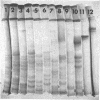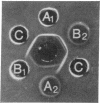Abstract
Spontaneous and chemically induced mutants with reduced ability to produce cholera enterotoxin (choleragen) as an extracellular protein were isolated from Vibrio cholerae strains 569B Inaba, a classical cholera vibrio, and 3083-2 Ogawa, an El Tor vibrio. By qualitative and quantitative immunological assay in vitro such mutants could be separated into different classes characterized either by production of no detectable choleragen (tox minus), or of small quantities of extracellular choleragen, or of large quantities of cell-associated choleragen but little extracellular choleragen. Analysis of proteins in concentrated culture supernates by electrophoresis in polyacrylamide gels showed that cultures from tox minus strains lacked proteins with electrophoretic mobilities corresponding with choleragen or the spontaneously formed toxoid (choleragenoid). Infant rabbits infected with the tox minus strains remained asymptomatic or developed milder symptoms than rabbits infected with the tox+ parental strains. When symptoms of cholera developed after inoculation with tox minus mutants, detectable numbers of tox+ revertants could be isolated from the intestines of the infected animals. Two tox minus strains, designated M13 and M27, caused no sumptoms and showed no evidence of reversion to tox+ during single passage in infant rabbits, and mutant M13 also remained avirulent and stably tox minus during six cycles of serial passage in infant rabbits. Strains M13 and M27 were also noncholeragenic in acult rabbit ileal loops. Quantitative cultures of the intestines from infected infant rabbits demonstrated that the avirulent mutant M13 can multiply in vivo and can persist in the intestinal tract for at least 48 h.
Full text
PDF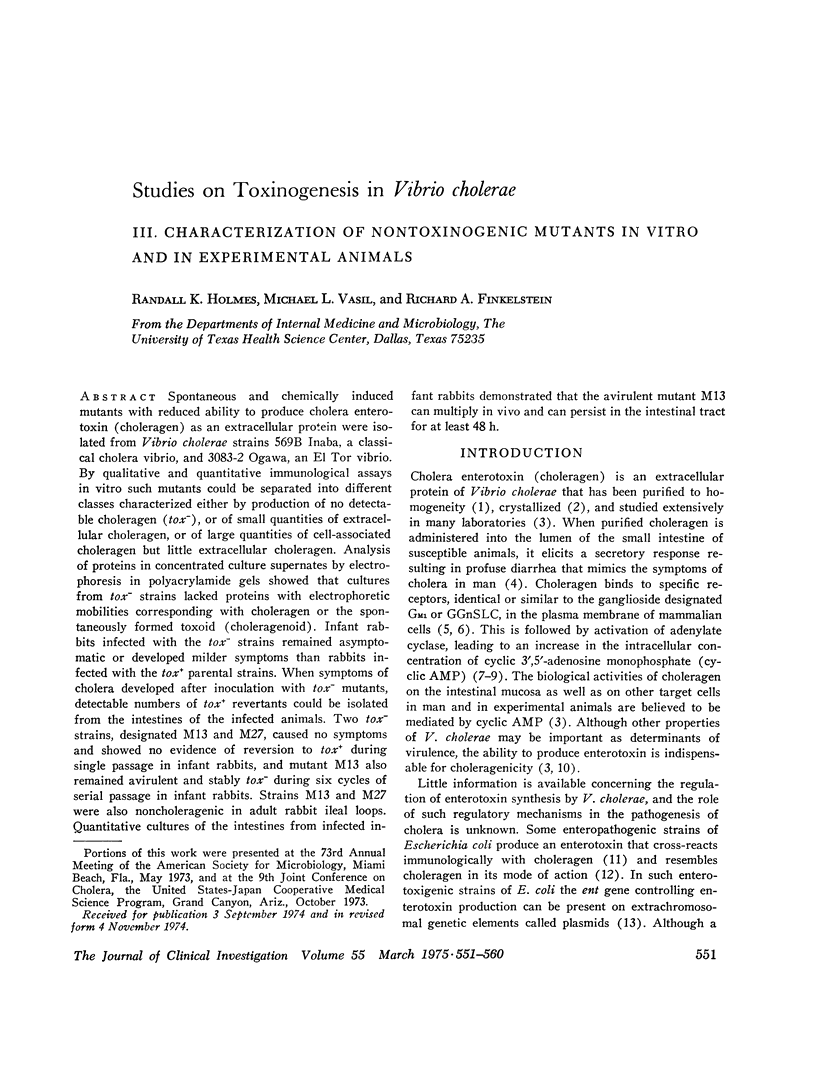
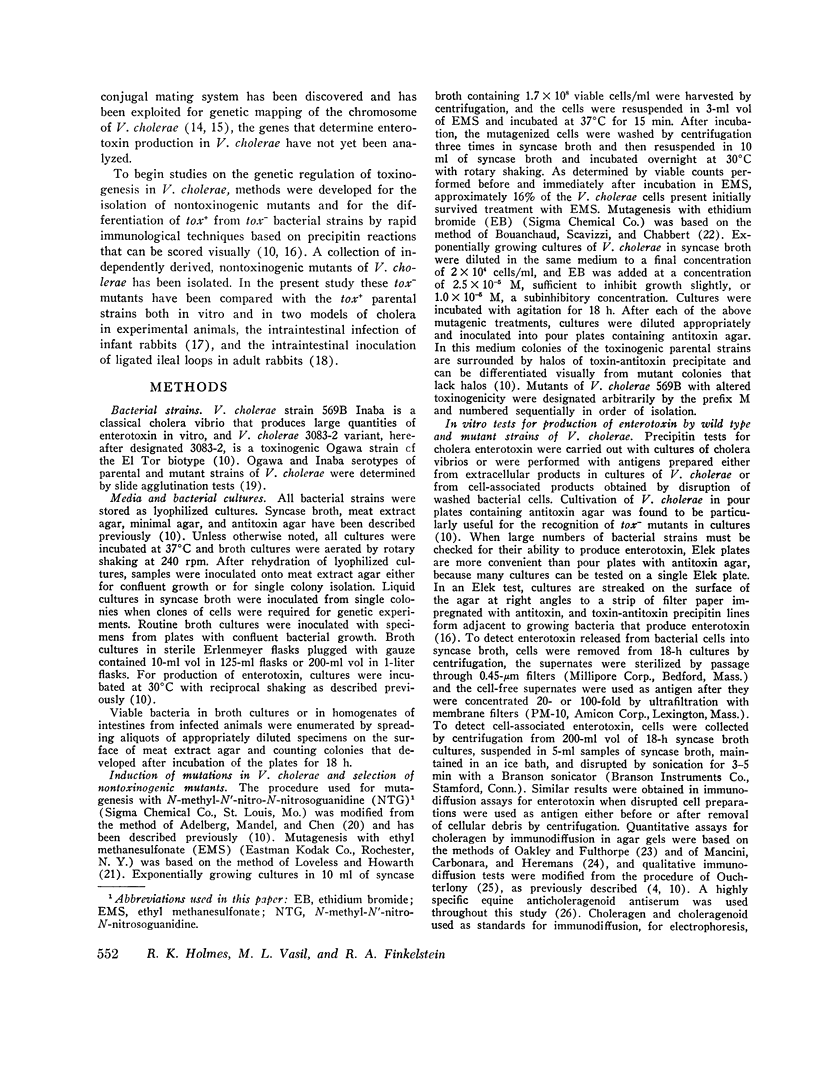
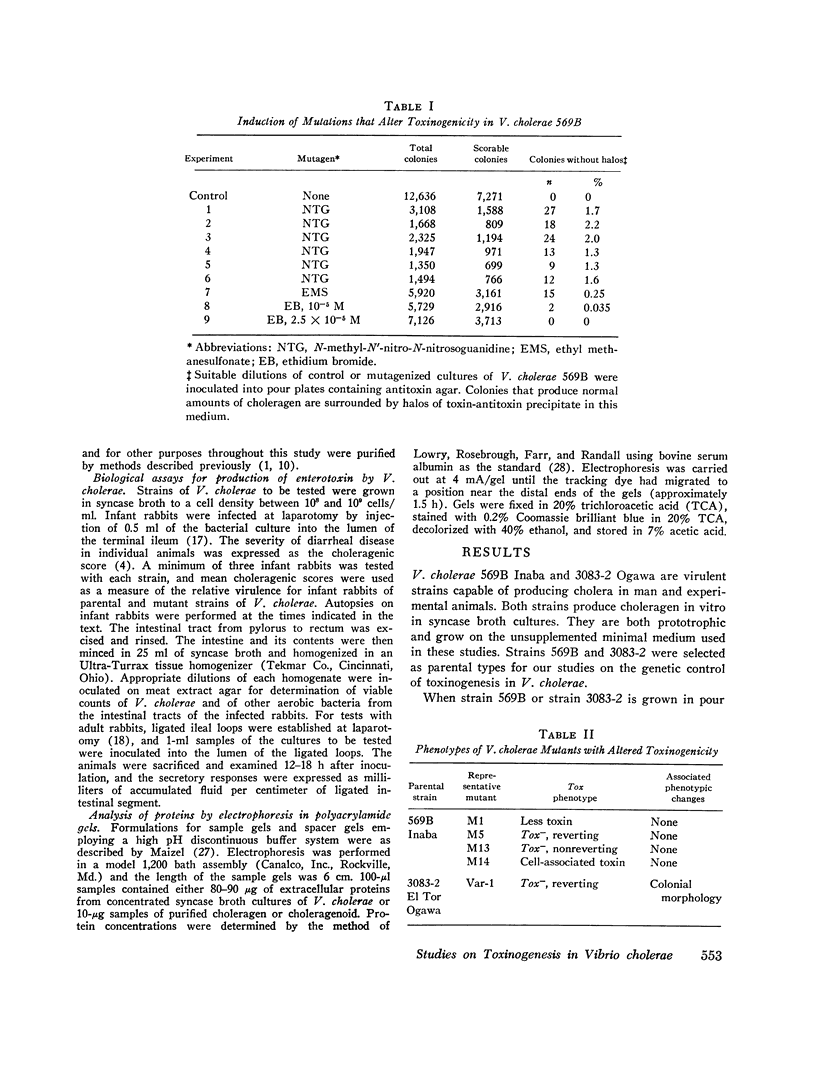
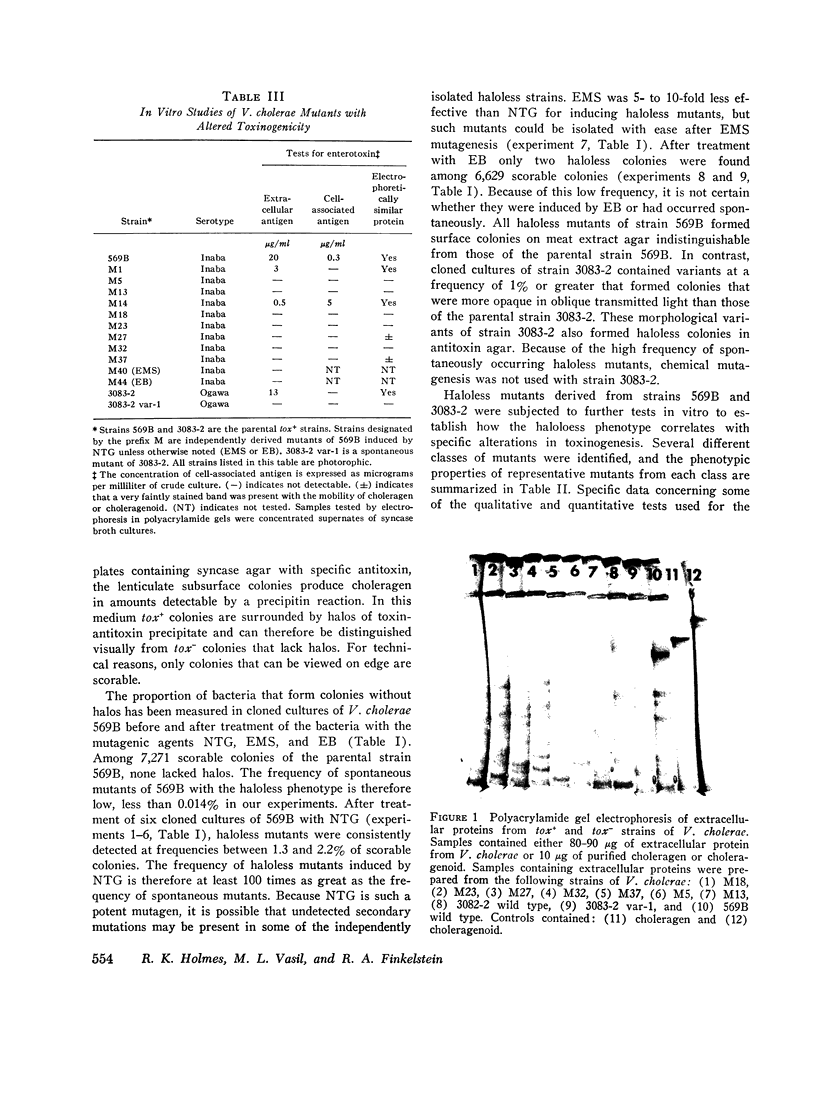
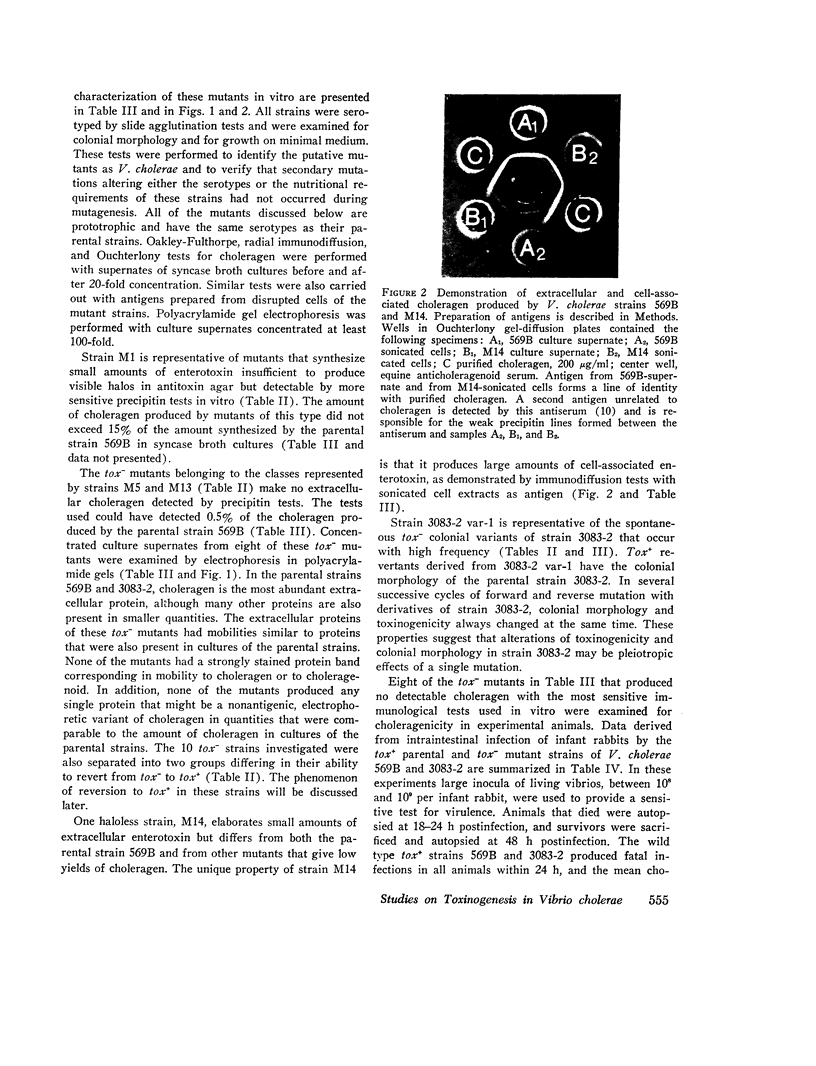
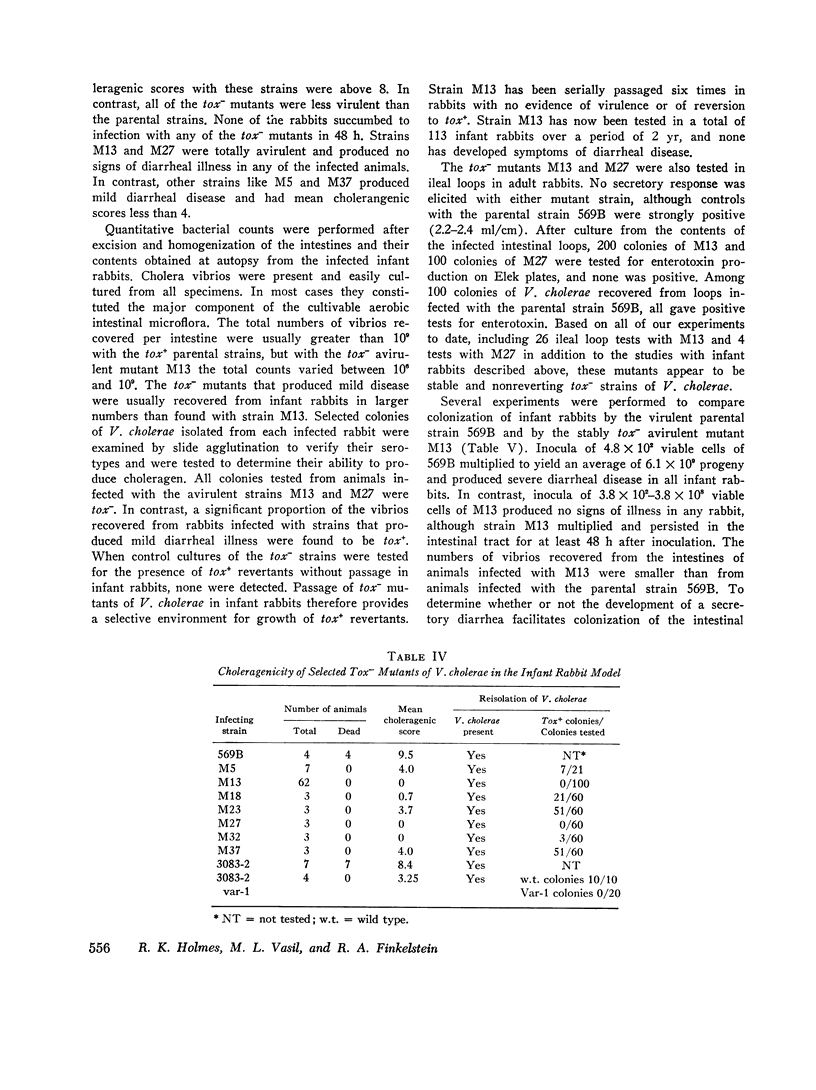
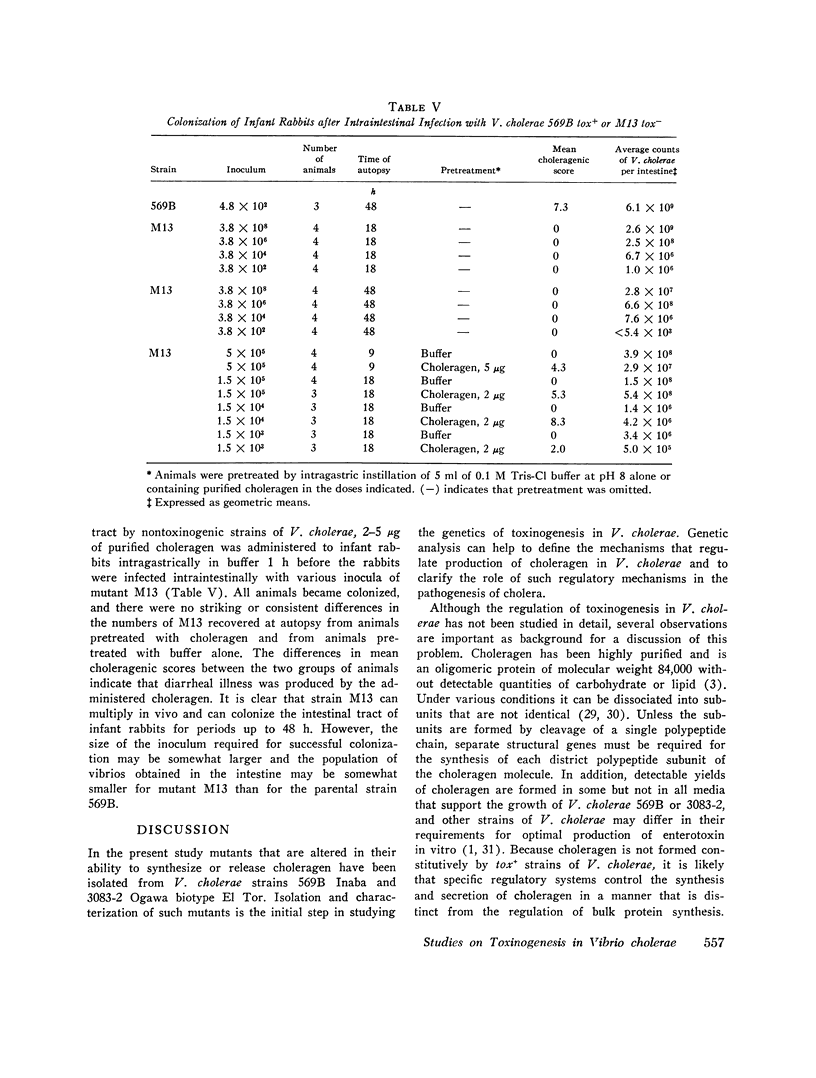
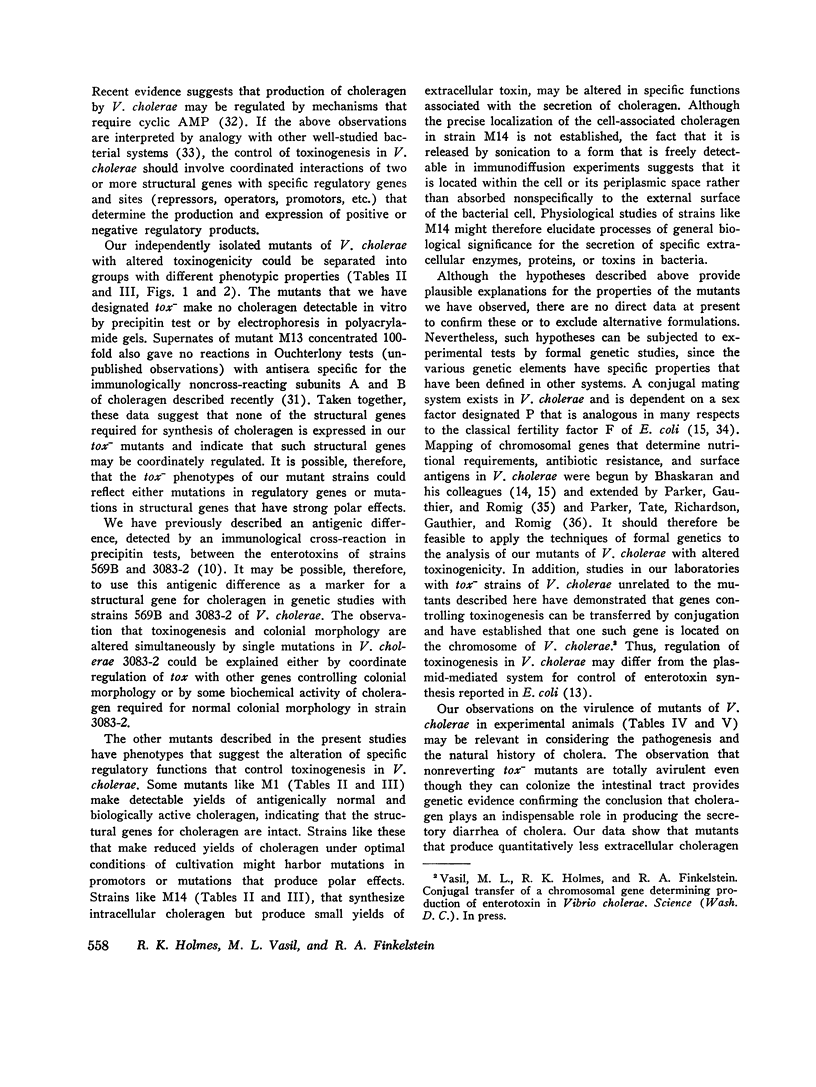
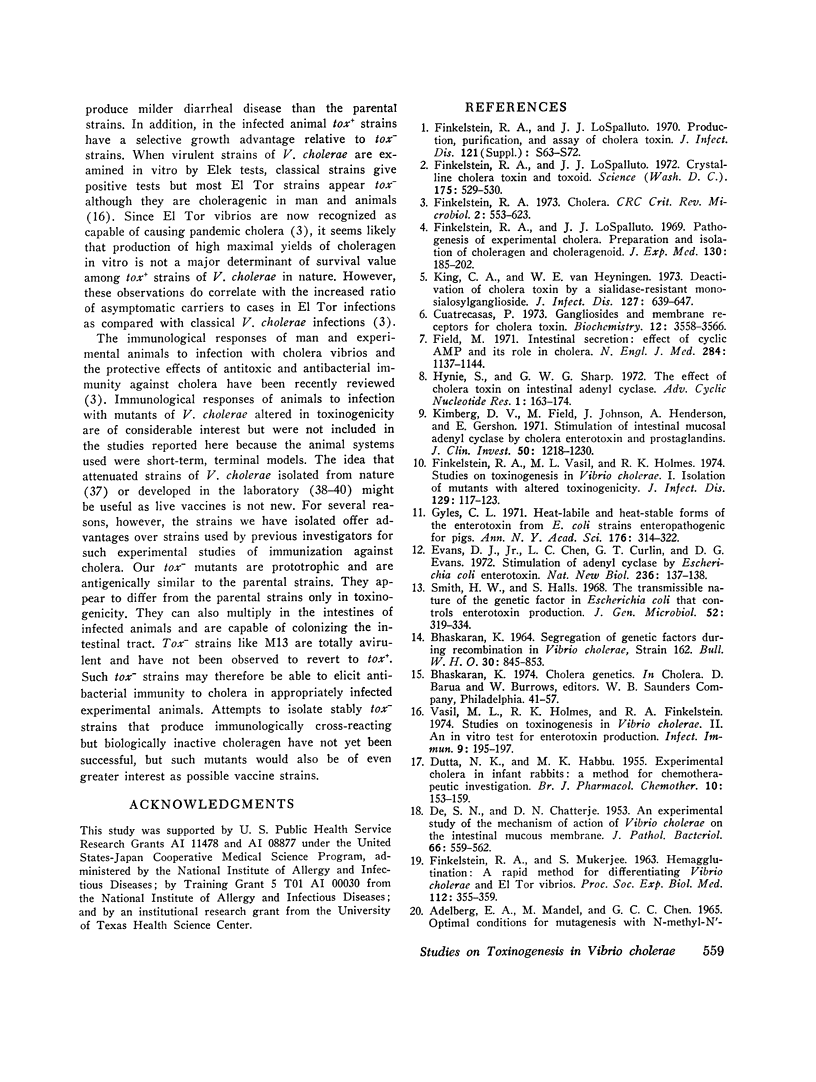
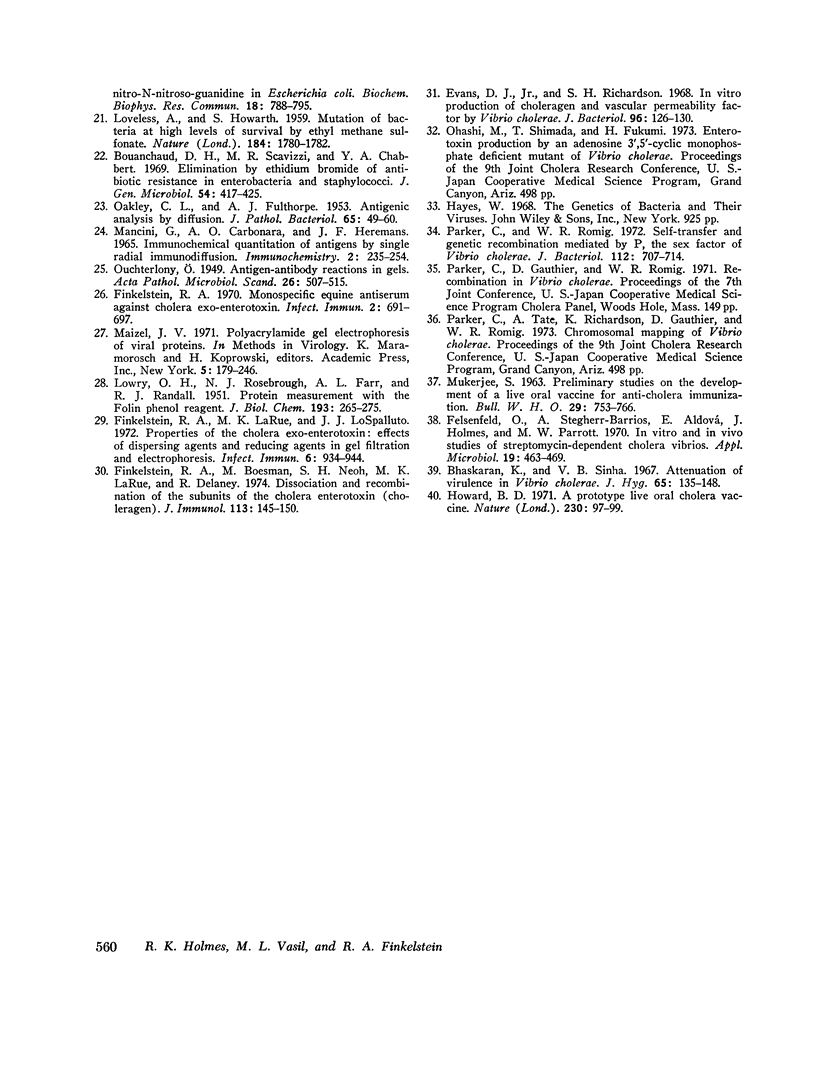
Images in this article
Selected References
These references are in PubMed. This may not be the complete list of references from this article.
- BHASKARAN K. SEGREGATION OF GENETIC FACTORS DURING RECOMBINATION IN VIBRIO CHOLERAE, STRAIN 162. Bull World Health Organ. 1964;30:845–853. [PMC free article] [PubMed] [Google Scholar]
- Bouanchaud D. H., Scavizzi M. R., Chabbert Y. A. Elimination by ethidium bromide of antibiotic resistance in enterobacteria and staphylococci. J Gen Microbiol. 1968 Dec;54(3):417–425. doi: 10.1099/00221287-54-3-417. [DOI] [PubMed] [Google Scholar]
- Cuatrecasas P. Gangliosides and membrane receptors for cholera toxin. Biochemistry. 1973 Aug 28;12(18):3558–3566. doi: 10.1021/bi00742a032. [DOI] [PubMed] [Google Scholar]
- DE S. N., CHATTERJE D. N. An experimental study of the mechanism of action of Vibriod cholerae on the intestinal mucous membrane. J Pathol Bacteriol. 1953 Oct;66(2):559–562. doi: 10.1002/path.1700660228. [DOI] [PubMed] [Google Scholar]
- DUTTA N. K., HABBU M. K. Experimental cholera in infant rabbits: a method for chemotherapeutic investigation. Br J Pharmacol Chemother. 1955 Jun;10(2):153–159. doi: 10.1111/j.1476-5381.1955.tb00074.x. [DOI] [PMC free article] [PubMed] [Google Scholar]
- Evans D. J., Jr, Chen L. C., Curlin G. T., Evans D. G. Stimulation of adenyl cyclase by Escherichia coli enterotoxin. Nat New Biol. 1972 Apr 5;236(66):137–138. doi: 10.1038/newbio236137a0. [DOI] [PubMed] [Google Scholar]
- Evans D. J., Jr, Richardson S. H. In vitro production of choleragen and vascular permeability factor by Vibrio cholerae. J Bacteriol. 1968 Jul;96(1):126–130. doi: 10.1128/jb.96.1.126-130.1968. [DOI] [PMC free article] [PubMed] [Google Scholar]
- Felsenfeld O., Stegherr-Barrios A., Aldová E., Holmes J., Parrott M. W. In vitro and in vivo studies of streptomycin-dependent cholera vibrios. Appl Microbiol. 1970 Mar;19(3):463–469. doi: 10.1128/am.19.3.463-469.1970. [DOI] [PMC free article] [PubMed] [Google Scholar]
- Field M: Intestinal secretion: effect of cyclic AMP and its role in cholera. N Engl J Med. 1971 May 20;284(20):1137–1144. doi: 10.1056/NEJM197105202842008. [DOI] [PubMed] [Google Scholar]
- Finkelstein R. A., Boesman M., Neoh S. H., LaRue M. K., Delaney R. Dissociation and recombination of the subunits of the cholera enterotoxin (choleragen). J Immunol. 1974 Jul;113(1):145–150. [PubMed] [Google Scholar]
- Finkelstein R. A., LaRue M. K., LoSpalluto J. J. Properties of the cholera exo-enterotoxin: effects of dispersing agents and reducing agents in gel filtration and electrophoresis. Infect Immun. 1972 Dec;6(6):934–944. doi: 10.1128/iai.6.6.934-944.1972. [DOI] [PMC free article] [PubMed] [Google Scholar]
- Finkelstein R. A., LoSpalluto J. J. Crystalline cholera toxin and toxoid. Science. 1972 Feb 4;175(4021):529–530. doi: 10.1126/science.175.4021.529. [DOI] [PubMed] [Google Scholar]
- Finkelstein R. A., LoSpalluto J. J. Pathogenesis of experimental cholera. Preparation and isolation of choleragen and choleragenoid. J Exp Med. 1969 Jul 1;130(1):185–202. doi: 10.1084/jem.130.1.185. [DOI] [PMC free article] [PubMed] [Google Scholar]
- Finkelstein R. A. Monospecific equine antiserum against cholera exo-enterotoxin. Infect Immun. 1970 Dec;2(6):691–697. doi: 10.1128/iai.2.6.691-697.1970. [DOI] [PMC free article] [PubMed] [Google Scholar]
- Finkelstein R. A., Vasil M. L., Holmes R. K. Studies on toxinogenesis in Vibrio cholerae. I. Isolation of mutants with altered toxinogenicity. J Infect Dis. 1974 Feb;129(2):117–123. doi: 10.1093/infdis/129.2.117. [DOI] [PubMed] [Google Scholar]
- Howard B. D. A prototype live oral cholera vaccine. Nature. 1971 Mar 12;230(5289):97–99. doi: 10.1038/230097a0. [DOI] [PubMed] [Google Scholar]
- Hynie S., Sharp G. W. The effect of cholera toxin on intestinal adenyl cyclase. Adv Cyclic Nucleotide Res. 1972;1:163–174. [PubMed] [Google Scholar]
- Kimberg D. V., Field M., Johnson J., Henderson A., Gershon E. Stimulation of intestinal mucosal adenyl cyclase by cholera enterotoxin and prostaglandins. J Clin Invest. 1971 Jun;50(6):1218–1230. doi: 10.1172/JCI106599. [DOI] [PMC free article] [PubMed] [Google Scholar]
- King C. A., Van Heyningen W. E. Deactivation of cholera toxin by a sialidase-resistant monosialosylganglioside. J Infect Dis. 1973 Jun;127(6):639–647. doi: 10.1093/infdis/127.6.639. [DOI] [PubMed] [Google Scholar]
- LOVELESS A., HOWARTH S. Mutation of bacteria at high levels of survival by ethyl methane sulphonate. Nature. 1959 Dec 5;184:1780–1782. doi: 10.1038/1841780a0. [DOI] [PubMed] [Google Scholar]
- LOWRY O. H., ROSEBROUGH N. J., FARR A. L., RANDALL R. J. Protein measurement with the Folin phenol reagent. J Biol Chem. 1951 Nov;193(1):265–275. [PubMed] [Google Scholar]
- MUKERJEE S. PRELIMINARY STUDIES ON THE DEVELOPMENT OF A LIVE ORAL VACCINE FOR ANTI-CHOLERA IMMUNIZATION. Bull World Health Organ. 1963;29:753–766. [PMC free article] [PubMed] [Google Scholar]
- Mancini G., Carbonara A. O., Heremans J. F. Immunochemical quantitation of antigens by single radial immunodiffusion. Immunochemistry. 1965 Sep;2(3):235–254. doi: 10.1016/0019-2791(65)90004-2. [DOI] [PubMed] [Google Scholar]
- OAKLEY C. L., FULTHORPE A. J. Antigenic analysis by diffusion. J Pathol Bacteriol. 1953 Jan;65(1):49–60. doi: 10.1002/path.1700650105. [DOI] [PubMed] [Google Scholar]
- Parker C., Romig W. R. Self-transfer and genetic recombination mediated by P, the sex factor of Vibrio cholerae. J Bacteriol. 1972 Nov;112(2):707–714. doi: 10.1128/jb.112.2.707-714.1972. [DOI] [PMC free article] [PubMed] [Google Scholar]
- Vasil M. L., Holmes R. K., Finkelstein R. A. Studies on toxinogenesis in Vibrio cholerae. II. An vitro test for enterotoxin production. Infect Immun. 1974 Jan;9(1):195–197. doi: 10.1128/iai.9.1.195-197.1974. [DOI] [PMC free article] [PubMed] [Google Scholar]



